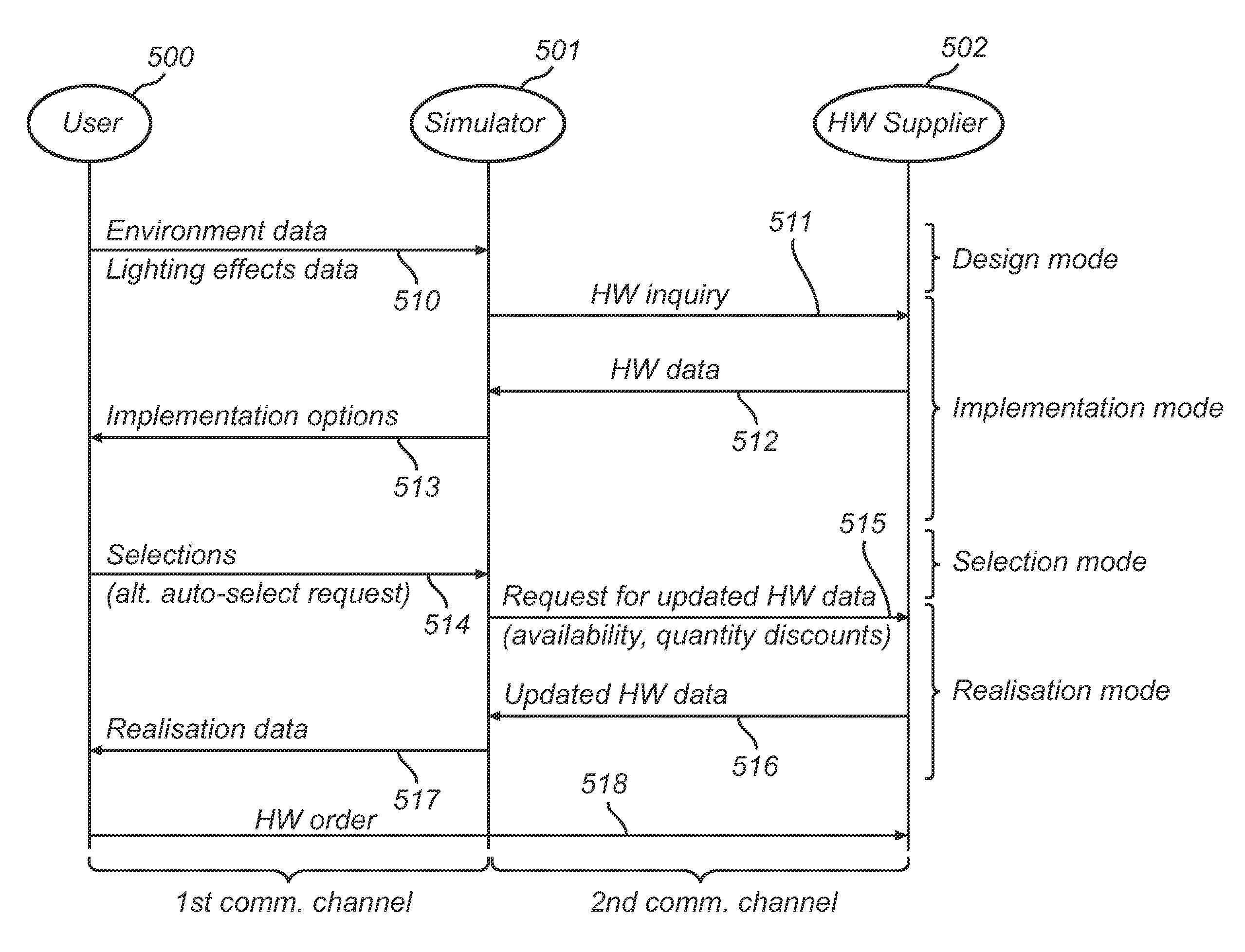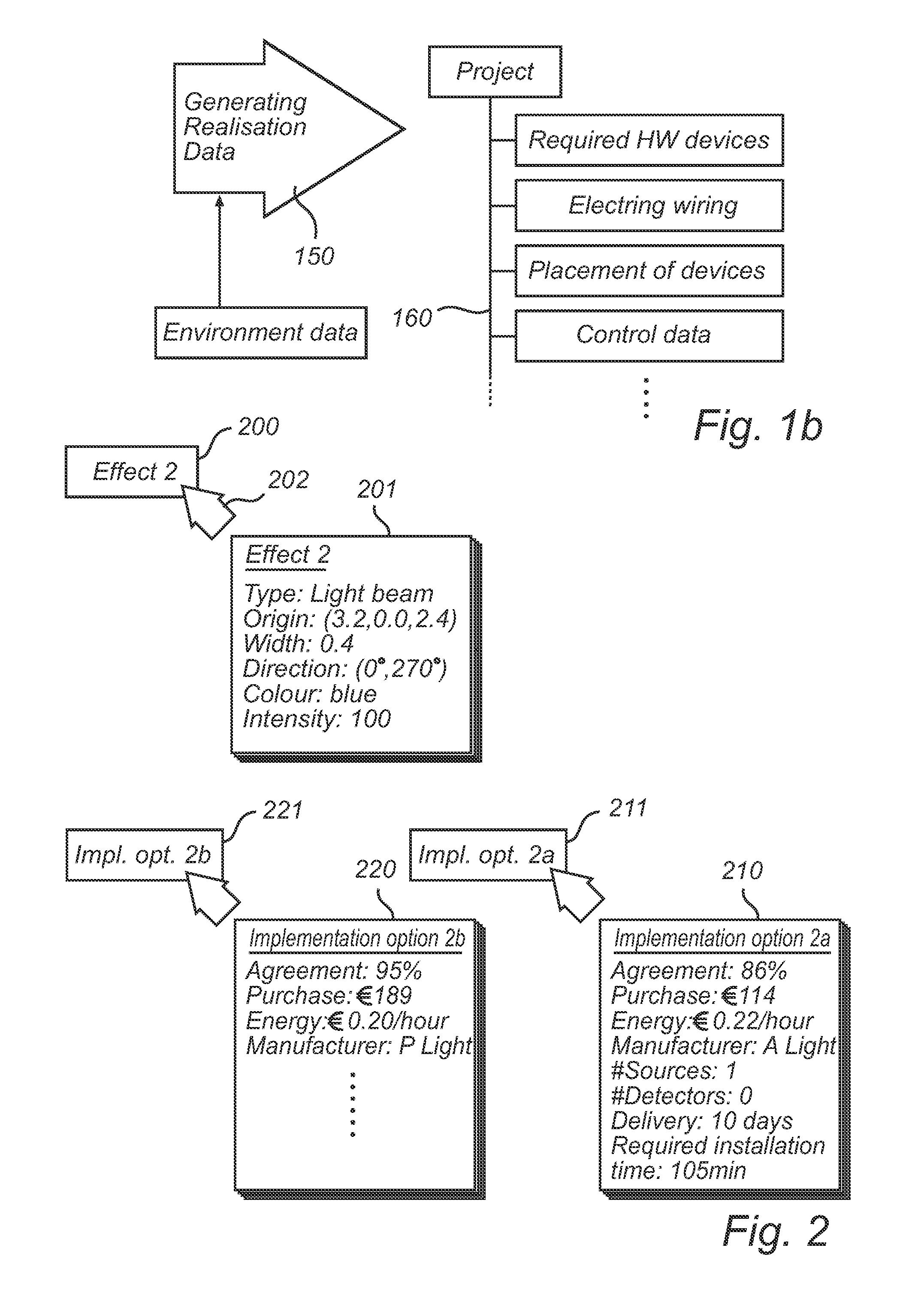Effect-driven specification of dynamic lighting
a dynamic lighting and effect-driven technology, applied in the field of design tools, can solve the problems of time-consuming process and discourage new users, and achieve the effects of maximizing agreement, improving support, and easily displaying such details within the user interfa
- Summary
- Abstract
- Description
- Claims
- Application Information
AI Technical Summary
Benefits of technology
Problems solved by technology
Method used
Image
Examples
Embodiment Construction
[0039]FIG. 1 illustrates an exemplary embodiment of the invention as a computer-implemented method for simulating realization of lighting effects in an environment. A set of n lighting effects, which are to be realized by selecting, acquiring, installing, programming and operating devices, will be referred to as a project in all stages of the realization process. The project is represented as a first tree 100 in a graphical user interface of a computer system carrying out the method. The leaves of the tree 100 represent the lighting effects entered by the user, which are labeled Effect 1, Effect 2, etc. The lighting effects may be entered by selection from a palette of effects in a graphical user interface, as will be further discussed below with reference to FIG. 6.
[0040]In a first processing step 110, implementation options are generated to realize the lighting effects. This generation of implementation options is based on data indicative of installable hardware devices. An implem...
PUM
 Login to View More
Login to View More Abstract
Description
Claims
Application Information
 Login to View More
Login to View More - R&D
- Intellectual Property
- Life Sciences
- Materials
- Tech Scout
- Unparalleled Data Quality
- Higher Quality Content
- 60% Fewer Hallucinations
Browse by: Latest US Patents, China's latest patents, Technical Efficacy Thesaurus, Application Domain, Technology Topic, Popular Technical Reports.
© 2025 PatSnap. All rights reserved.Legal|Privacy policy|Modern Slavery Act Transparency Statement|Sitemap|About US| Contact US: help@patsnap.com



